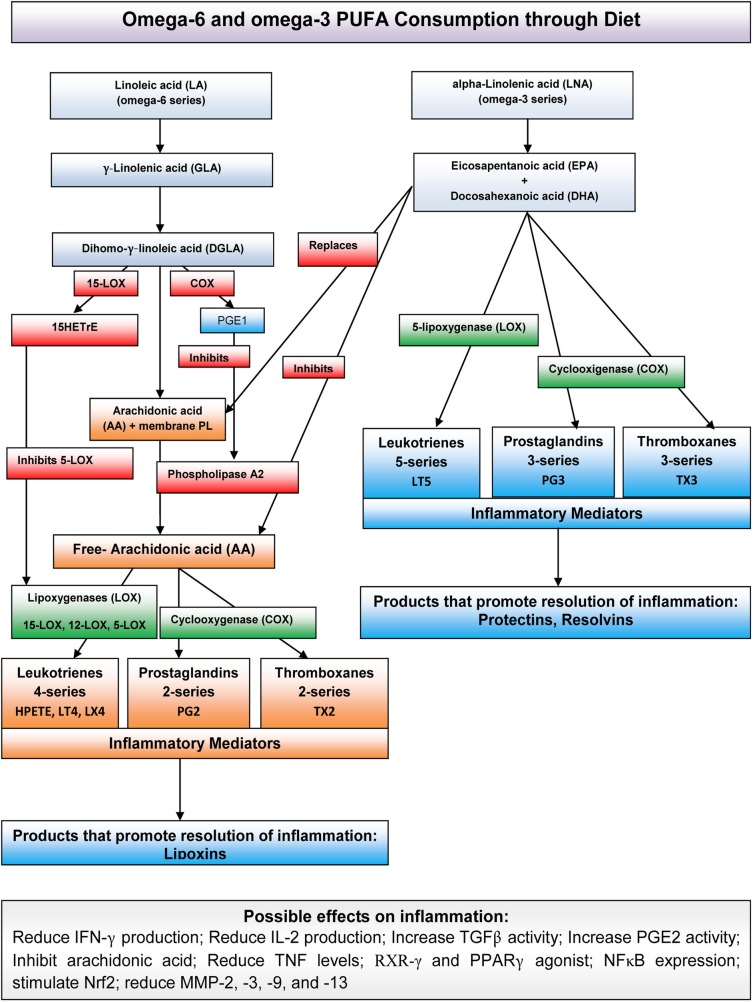Figure 1.
Ω-6 and Ω-3 PUFAs, their respective metabolic derivatives and their possible effects on inflammation. After consumption, the PUFAs are metabolised via several pathways (not shown) to active compounds that mediate inflammation and to products that promote the resolution of inflammation. COX, cyclooxygenase; HETrE, hydroxyeicosatetraenoic acid; HPETE, hydroperoxyeicosatetraenoic acid; IFN-γ, interferon γ; IL-2, interleukin 2; LOX, lipoxygenase; LT, leukotriene; MMP, metalloproteinase; NFκB, nuclear factor kappa B; Nrf2, nuclear respiratory factor; PG, prostaglandin; PGE2, prostaglandin E2; PL, phospholipid; PPARγ, peroxisome proliferator-activated receptor γ; PUFAs, polyunsaturated fatty acids; RXR-γ, retinoid X receptor/γ; TGFβ, transforming growth factor β; TNF, tumour necrosis factor; TX, thromboxane.

